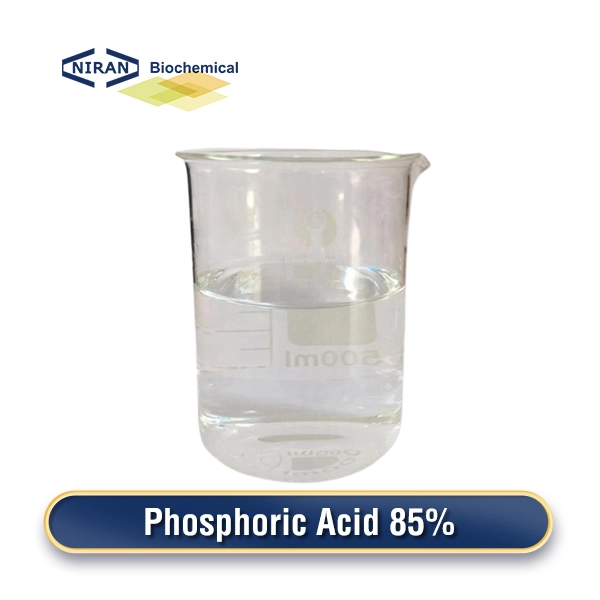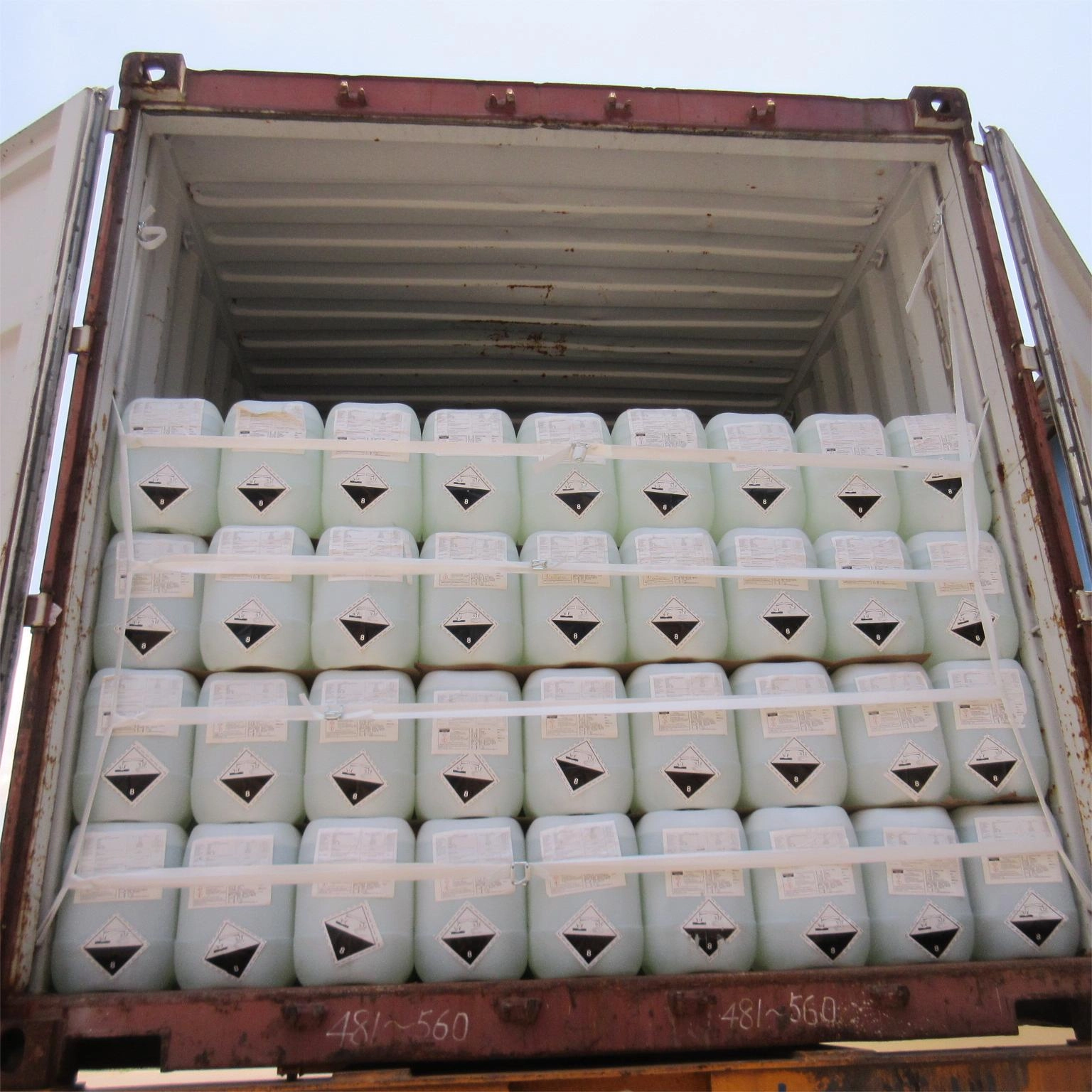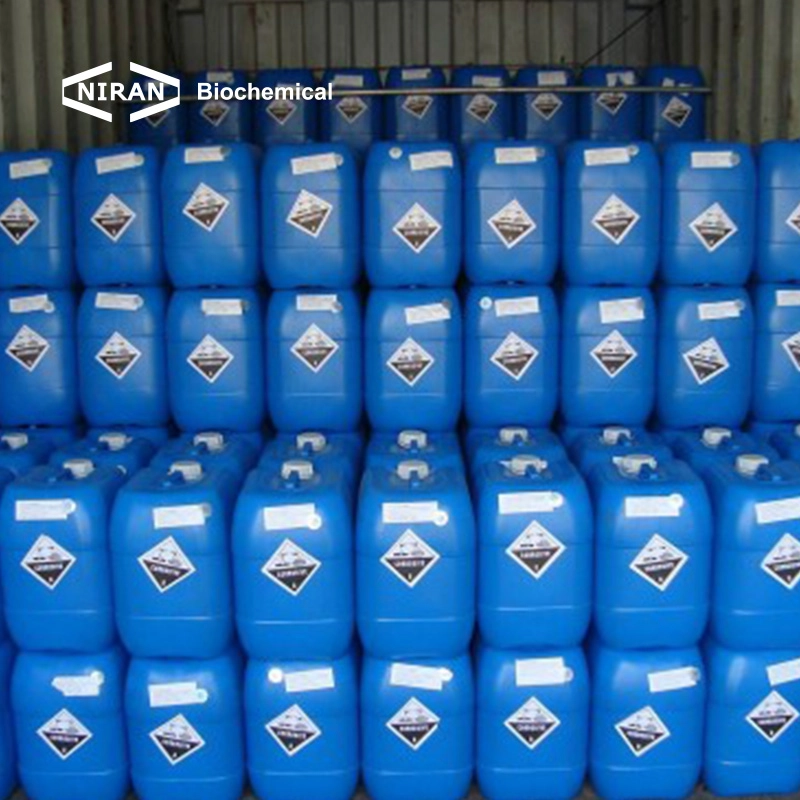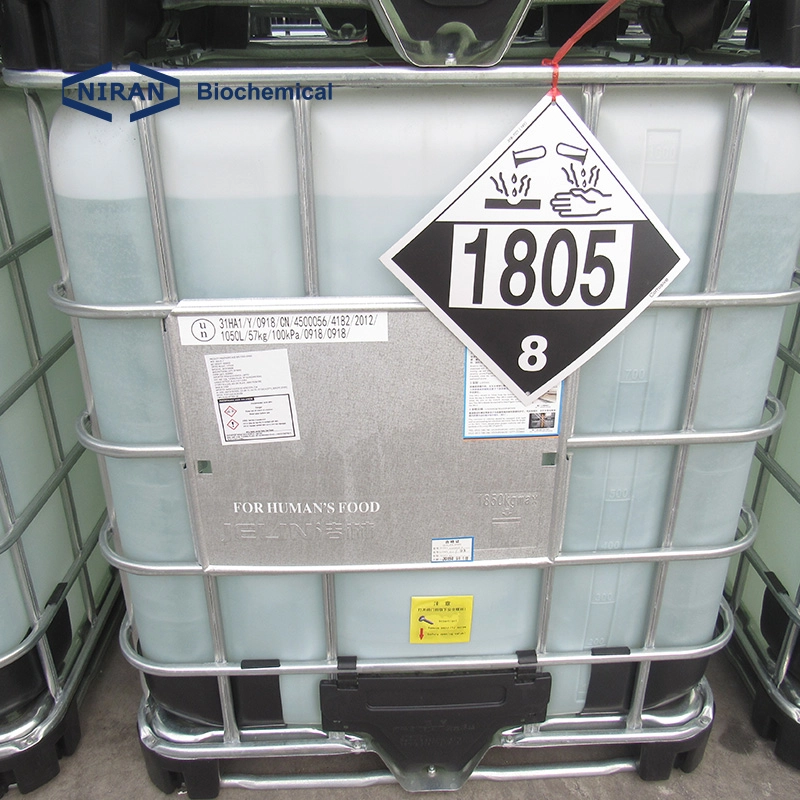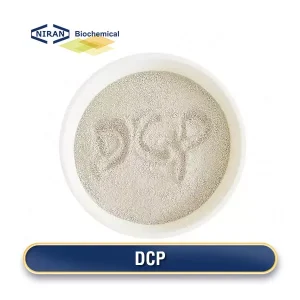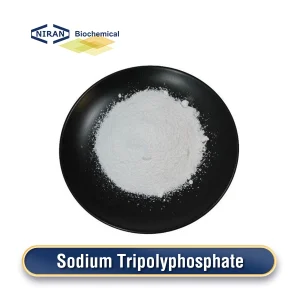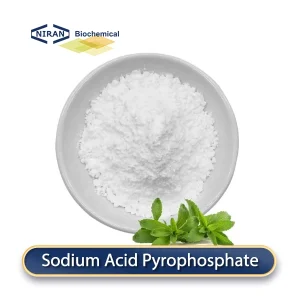Phosphoric Acid Production Methods
There are two main methods for preparing phosphoric acid:
1. Wet phosphoric acid production
Wet phosphoric acid production uses phosphate rock as raw material and obtains phosphoric acid through multiple reactions. The specific method is: first crush and pulverize the phosphate rock, then rough, select and precipitate it in an acidic solution, and finally crystallize the phosphoric acid. The wet phosphoric acid production process is relatively complicated, and a large amount of energy is consumed in the process, which also pollutes the environment to a certain extent.
2. Dry phosphoric acid production
Dry phosphoric acid production uses phosphogypsum or apatite as raw materials and obtains phosphoric acid through heating reaction. The specific method is: calcine phosphogypsum or apatite into calcium tetrahydrogen phosphate, and then obtains pure phosphoric acid through hydrolysis, refining, concentration, crystallization and other steps.
Related parameters:
| Items | Standards |
| H3PO4 | 85% MIN. |
| F | 10 PPM MAX. |
| AS | 0.5 PPM MAX. |
| HEAVY METALS (AS PB) | 5 PPM MAX. |
| EASY OXIDIZED SUBSTANCE AS H3PO3 | 120 PPM MAX. |
Recommended dosage
| Food Name | Maximum usage(g/kg) |
| Carbonated drinks | 2 g/kg |
| Fruit drinks | 1 g/kg |
| Lactic acid drinks | 0.5 g/kg |
| Yogurt | 0.5 g/kg |
| Cheese | 0.5 g/kg |
| Candy | 0.5 g/kg |
| Sauce | 0.5 g/kg |
| Salad | 0.5 g/kg |
| Meat products | 1 g/kg |
| Sausage | 1 g/kg |
| Ham | 1 g/kg |
| Bacon | 1 g/kg |
| Cured meats | 1 g/kg |
| Surimi products | 1 g/kg |
Phosphoric Acid 85% has a wide range of uses
1. Acidifier
Phosphoric acid 85% can be used as an acidifier in food processing to adjust the acidity of food. Acidity is a very important factor in candies, cakes and beverages. Phosphoric acid 85% can keep food at a certain acidity, enhance the taste and make food more delicious.
2. Antioxidant
Phosphoric acid 85% is also an excellent antioxidant. During food processing, some antioxidants are added to protect food from oxidation and extend the shelf life of food. Phosphoric acid 85% can be used as a commonly used antioxidant and has a very good protective effect on food.
3. Color fixer
During the processing, the pigments in food are easily affected by light, oxidation and other factors. Adding a certain amount of phosphoric acid 85% can stabilize the pigment molecules in food and prevent the pigment from changing color, making the food more beautiful in appearance.
4. Improve the taste of food
Phosphoric acid 85% can also be used to adjust the taste of food. It can make the food taste softer.
User asked question:
Q: What is the mechanism of action of phosphoric acid 85% in food?
A: 1. Acidity regulation: Phosphoric acid 85% is an acidity regulator that regulates the pH of food by releasing hydrogen ions (H⁺). This is very important for certain foods such as carbonated beverages, juices and dairy products, helping to maintain their sourness and overall flavor.
2. Chelating agent: Phosphoric acid 85% can bind to metal ions (such as calcium, magnesium, iron, etc.) to form stable chelates. This helps prevent adverse reactions caused by these metal ions during food processing, such as preventing fat oxidation, protein denaturation and color changes. This is particularly important for canned foods, juices and dairy products.
3. Preservatives: By lowering the pH of food, phosphoric acid 85% can inhibit the growth of microorganisms such as bacteria, molds and yeasts, thereby extending the shelf life of food. Low pH environments are not conducive to the reproduction of most microorganisms, so the preservative effect of phosphoric acid 85% is particularly evident in foods such as sauces, jams and candies.
4. Improved taste: Phosphoric acid 85% can affect the texture and mouthfeel of foods. For example, in carbonated beverages, phosphoric acid 85% not only provides sourness but also enhances the refreshing taste of the beverage. In addition, phosphoric acid 85% can help form a smoother texture in some dairy products and desserts.
5. Fermentation control: In baked goods, phosphoric acid 85% helps control the fermentation process. It reacts with baking soda to produce carbon dioxide gas, which makes the dough rise. Different types of phosphates (such as sodium dihydrogen phosphate and calcium hydrogen phosphate) can control the rate and degree of fermentation to achieve the desired leavening effect.
6. Nutritional fortification: Phosphoric acid 85% and phosphate salts are important mineral sources that help supplement the phosphorus element needed by the human body. Phosphorus is a key component for cell function and bone and tooth health. Phosphoric acid 85% is added to some fortified foods and beverages to improve their nutritional value.
7. Emulsifiers and stabilizers: In dairy products and other fat-containing foods, phosphoric acid 85% can act as an emulsifier to help disperse and stabilize the mixture of fat and water to prevent separation and precipitation. For example, in processed cheese and ice cream, phosphates help form a homogeneous, stable emulsion.
Q: What is the current market situation of phosphoric acid at home and abroad?
A: Domestic market: In China, economic slowdown and geopolitical tensions have led to fluctuations in raw material prices, slowing market growth. However, as supply chain issues ease, market demand is expected to pick up in the second half of 2024.
International market: The global phosphoric acid market is expected to fluctuate, with slow growth in 2023, but is expected to improve by 2024. The market benefits from environmental protection policies supported by governments and the growth of biochemicals.
However, the market recovery in different regions is uneven, and companies need to focus on cost control and efficiency improvement. The market is expected to continue to grow by 2031, especially in North America, Europe and Asia Pacific.

